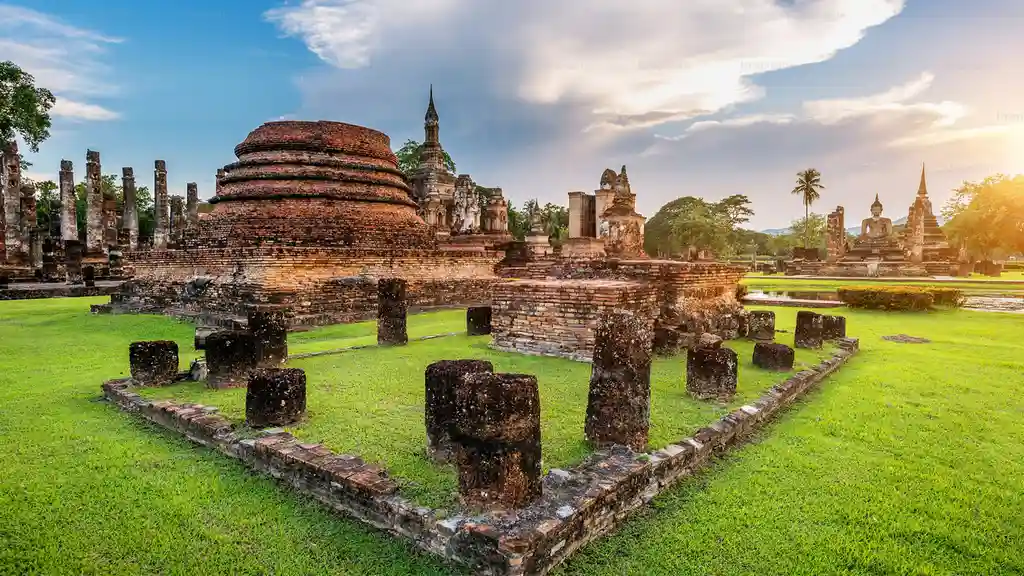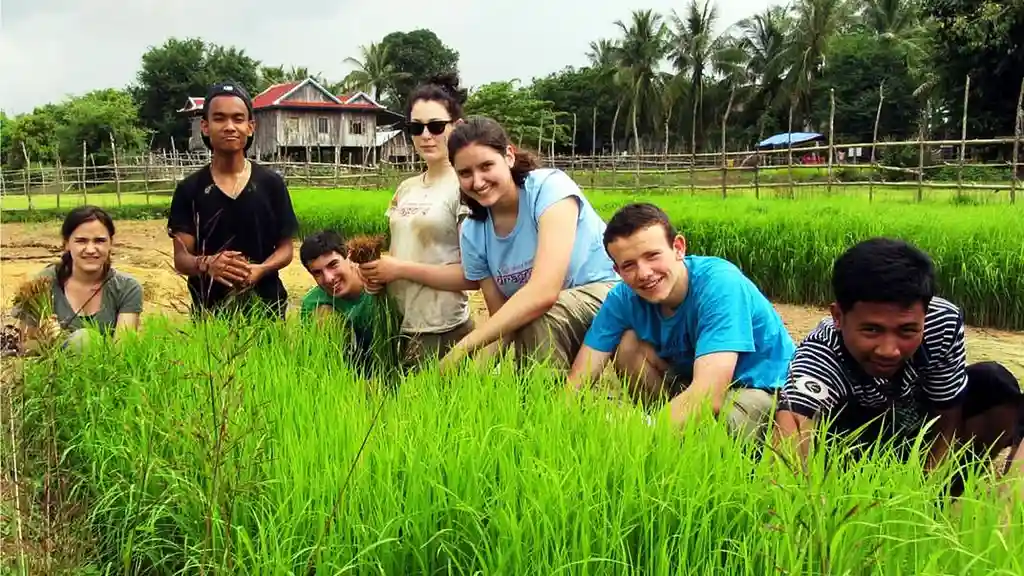Cambodian Silk Production: A US Textile Enthusiast's Guide

Unveiling the Secrets of Cambodian Silk A Journey for Textile Lovers
Hey there, fellow textile fanatics! Ever found yourself mesmerized by the shimmering beauty of silk? Well, get ready to dive deep into the captivating world of Cambodian silk, a treasure trove of tradition, craftsmanship, and vibrant colors. As a US textile enthusiast myself, I've spent years exploring the ins and outs of this ancient art, and I'm thrilled to share my discoveries with you. Forget mass-produced fabrics; we're talking about something truly special – silk woven with stories, dyed with natural pigments, and imbued with the spirit of Cambodia.
The History of Cambodian Silk Weaving A Rich Tapestry of Culture
Cambodian silk weaving isn't just a craft; it's a living history book. For centuries, silk production has been an integral part of Cambodian culture, passed down through generations of skilled artisans. The tradition dates back to at least the 13th century, with evidence found in bas-reliefs at Angkor Wat depicting women spinning and weaving silk. During the Khmer Empire, silk was a symbol of status and wealth, reserved for royalty and religious ceremonies. The intricate patterns and vibrant colors reflected the natural beauty of the land and the spiritual beliefs of the people.
Sadly, the industry faced a severe decline during the Khmer Rouge regime in the 1970s. Many weavers were displaced or killed, and the knowledge of traditional techniques was nearly lost. However, thanks to the dedication of a few surviving artisans and the support of international organizations, Cambodian silk weaving has experienced a remarkable revival. Today, it's not only a source of income for rural communities but also a vital part of Cambodia's cultural heritage.
The Silk Production Process From Silkworm to Stunning Fabric
Okay, let's get down to the nitty-gritty. What exactly goes into creating these magnificent silk fabrics? The process is surprisingly labor-intensive and requires immense skill and patience. It all starts with the silkworms, specifically the *Bombyx mori* species. These little guys are voracious eaters, munching on mulberry leaves day and night. After about a month, they spin cocoons made of a single, continuous strand of silk. These cocoons are then harvested, and the silk is extracted.
Here's a breakdown of the key steps:
- Silkworm Rearing: This involves providing the silkworms with a constant supply of fresh mulberry leaves and maintaining a clean and controlled environment. It's a delicate process that requires careful attention to detail.
- Cocoon Harvesting: The cocoons are harvested just before the silkworms emerge as moths. This ensures that the silk fibers remain intact.
- Silk Reeling: This is where the magic happens! The cocoons are boiled to dissolve the sericin, a gummy protein that holds the silk fibers together. The softened fibers are then carefully unwound and reeled onto a spool. This process requires a steady hand and a keen eye.
- Silk Dyeing: Cambodian silk is renowned for its vibrant colors, which are derived from natural dyes. These dyes are extracted from plants, insects, and minerals. The dyeing process is often a closely guarded secret, passed down through generations of families.
- Silk Weaving: Finally, the dyed silk threads are woven into fabric using traditional looms. The patterns are often intricate and symbolic, reflecting the weaver's creativity and cultural heritage.
Natural Dyes The Colors of Cambodia
Forget synthetic dyes! Cambodian silk weavers are masters of natural dyeing, using ingredients sourced directly from their surroundings. This not only creates stunning colors but also ensures that the fabrics are environmentally friendly. Here are some of the most common natural dyes used in Cambodian silk production:
- Indigo: Derived from the indigo plant, this dye produces a range of blues, from deep indigo to pale sky blue.
- Lac: Extracted from the secretions of lac insects, this dye creates vibrant reds and pinks.
- Turmeric: This spice provides a warm yellow hue.
- Ebony: The bark of the ebony tree yields a deep black dye.
- Prohut Bark: This bark produces a beautiful range of yellows and browns.
- Kram: Another source of indigo, but often used to create lighter shades of blue.
The dyeing process is often repeated multiple times to achieve the desired color intensity. Weavers also use mordants, such as alum or iron, to help the dyes bind to the silk fibers.
Identifying Authentic Cambodian Silk A Buyers Guide
With the growing popularity of Cambodian silk, it's important to be able to distinguish authentic products from imitations. Here are a few tips to help you spot the real deal:
- Look for Imperfections: Handmade silk will often have slight imperfections, such as variations in color or texture. These imperfections are a sign of authenticity and add to the fabric's unique character. Perfectly uniform fabric is more likely to be machine-made.
- Check the Weave: Authentic Cambodian silk is typically woven on traditional looms, which create a distinctive texture. The weave should be tight and even, but not overly perfect.
- Feel the Fabric: Real silk has a luxurious, smooth feel. It should be lightweight and drape beautifully. Synthetic fabrics often feel stiff or scratchy.
- Ask Questions: Don't be afraid to ask the seller about the origin of the silk and the dyeing process. Reputable vendors will be happy to share information about their products. Look for fair trade certifications.
- Smell the Fabric: Real silk has a faint smell of burnt hair when burned. Synthetic fabrics will smell like plastic. (Test on a small, inconspicuous area!)
Recommended Cambodian Silk Products and Their Uses
Now for the fun part! Let's explore some of the amazing products made from Cambodian silk and how you can incorporate them into your life.
- Silk Scarves: A versatile accessory that can add a touch of elegance to any outfit. They come in a wide range of colors, patterns, and sizes. Wear them around your neck, tie them to your handbag, or use them as a headscarf. A simple silk scarf can cost anywhere from $20 to $100, depending on the size and complexity of the design. A good example is a hand-woven, naturally dyed indigo scarf from Takeo province, priced at around $65. Its deep blue hues complement both casual and formal wear.
- Silk Shawls: Larger than scarves, shawls are perfect for adding warmth and style. They can be draped over your shoulders on a cool evening or used as a decorative throw on your sofa. Look for shawls with intricate ikat patterns or hand-painted designs. These can range from $50 to $200. Imagine a stunning silk shawl featuring a traditional Khmer motif, perfect for adding a touch of cultural flair to your home décor.
- Silk Clothing: From flowing dresses to tailored blouses, Cambodian silk clothing is both beautiful and comfortable. Silk is a breathable fabric that is perfect for warm weather. Be aware that silk clothing requires special care, such as hand washing or dry cleaning. A simple silk blouse may cost $80 to $250, while a more elaborate dress could range from $300 to $800. Consider a lightweight silk dress, perfect for a summer wedding or a special occasion.
- Silk Bedding: Indulge in the ultimate luxury with Cambodian silk bedding. Silk pillowcases and sheets are incredibly soft and smooth, promoting restful sleep. They are also hypoallergenic and gentle on the skin. Be prepared to splurge, as silk bedding can be quite expensive. A silk pillowcase might cost $50 to $150, while a full set of sheets could range from $500 to $2000. Imagine sinking into a luxurious silk pillowcase at the end of a long day.
- Silk Wall Hangings: Transform your living space with stunning silk wall hangings. These tapestries often depict scenes from Khmer mythology, nature, or everyday life. They add a touch of elegance and cultural richness to any room. Prices vary greatly depending on size and intricacy, ranging from $100 to several thousand dollars. A large, hand-embroidered silk wall hanging depicting a scene from the Ramayana would be a breathtaking addition to any home.
- Silk Purses and Bags: Add a touch of Cambodian flair to your accessory collection with a silk purse or bag. These come in various styles, from small clutches to large tote bags. Look for unique designs and embellishments. Prices range from $30 to $200. A vibrant silk clutch featuring intricate beadwork would be perfect for a night out.
Product Comparisons and Price Points Choosing the Right Silk
Okay, so you're ready to buy some Cambodian silk, but you're not sure where to start. Here's a quick comparison of some popular products and their price points:
- Silk Scarves vs. Silk Shawls: Scarves are generally smaller and more affordable than shawls. They are perfect for adding a pop of color to an outfit. Shawls are larger and more versatile, offering more coverage and warmth.
- Silk Clothing vs. Cotton Clothing: Silk clothing is more luxurious and breathable than cotton clothing. However, it also requires more care. Cotton is more durable and easier to care for, but it may not be as elegant.
- Hand-Woven Silk vs. Machine-Woven Silk: Hand-woven silk is more expensive than machine-woven silk, but it is also more unique and authentic. Hand-woven silk often has slight imperfections that add to its character. Machine-woven silk is more uniform and less expensive, but it may lack the charm of handmade silk.
- Naturally Dyed Silk vs. Synthetically Dyed Silk: Naturally dyed silk is more environmentally friendly and often has richer, more nuanced colors than synthetically dyed silk. However, it may also be more expensive and less colorfast.
When choosing Cambodian silk, consider your budget, your personal style, and your values. Do you prioritize authenticity, sustainability, or affordability? By considering these factors, you can find the perfect piece of Cambodian silk to treasure for years to come.
Caring for Your Cambodian Silk A Guide to Longevity
To ensure that your Cambodian silk stays beautiful for years to come, it's important to take proper care of it. Here are a few tips:
- Hand Wash Gently: The best way to clean silk is to hand wash it in cool water with a mild detergent specifically designed for delicate fabrics. Avoid harsh chemicals or bleach.
- Avoid Direct Sunlight: Prolonged exposure to direct sunlight can fade the colors of silk. Store your silk items in a dark, cool place.
- Iron on Low Heat: If you need to iron your silk, use a low heat setting and iron on the reverse side of the fabric.
- Store Properly: Store your silk items in a breathable garment bag to protect them from dust and moths.
- Dry Cleaning: For delicate or heavily embellished silk items, consider dry cleaning. Choose a reputable dry cleaner who specializes in delicate fabrics.
Supporting Cambodian Silk Weavers A Sustainable Choice
By purchasing authentic Cambodian silk, you are not only acquiring a beautiful and unique product but also supporting the livelihoods of rural communities. Many silk weaving villages are located in remote areas of Cambodia, where access to education and employment opportunities is limited. By buying their products, you are helping to preserve a traditional craft and empower these communities to thrive. Look for fair trade organizations that work directly with Cambodian silk weavers to ensure that they receive fair wages and safe working conditions. Your purchase can make a real difference!
So there you have it – a deep dive into the fascinating world of Cambodian silk! I hope this guide has inspired you to explore this beautiful art form and to support the talented artisans who keep it alive. Happy weaving (or wearing!), friends!
:max_bytes(150000):strip_icc()/277019-baked-pork-chops-with-cream-of-mushroom-soup-DDMFS-beauty-4x3-BG-7505-5762b731cf30447d9cbbbbbf387beafa.jpg)






